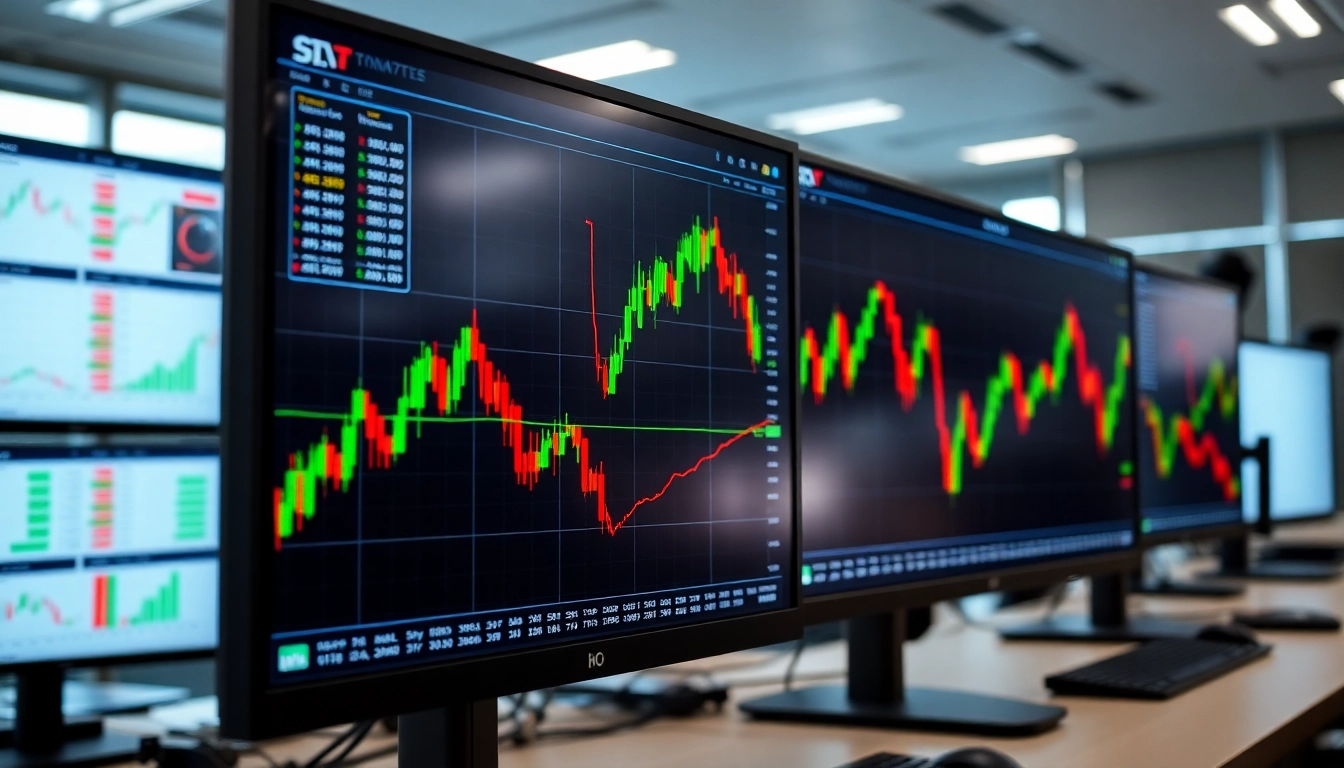Understanding Forex Trading Market News and Its Impact on Currency Markets
In the ever-evolving landscape of global finance, staying informed about Forex Trading Market News is crucial for traders and investors alike. Market news influences currency valuations, shapes trading strategies, and reflects underlying economic and geopolitical developments. As the currency market responds swiftly to new data, geopolitical shifts, and policy changes, a comprehensive understanding of how news impacts forex markets is essential for maximizing trading success.
What is Forex Trading Market News and Why Does It Matter?
Forex trading market news encompasses the latest updates, reports, and analyses related to economic indicators, geopolitical events, monetary policies, and corporate earnings that directly or indirectly influence currency values. This news provides real-time insights into market sentiment and potential directional moves, allowing traders to anticipate future trends.
For example, a rise in U.S. unemployment figures can lead to a weakening dollar, as it signals economic slowdown and prompts the Federal Reserve to consider easing monetary policy. Conversely, positive employment data often bolsters the dollar, reflecting economic strength and potentially prompting rate hikes.
Understanding market news is not just about reacting to events—it’s about interpreting their implications and integrating this analysis into your trading strategy. For traders looking to stay ahead, regularly monitoring financial news platforms and economic calendars is essential.
Key Indicators That Influence Currency Fluctuations
Important economic indicators serve as barometers of national economic health and significantly influence currency movements. Common key indicators include:
- Interest Rate Decisions: Central banks set benchmark rates affecting borrowing costs and investment flows. An interest rate hike typically appreciates a currency due to higher yields attracting foreign capital.
- GDP Growth Rates: Robust GDP figures suggest economic vitality, often leading to currency appreciation.
- Inflation Data: Higher inflation can erode currency value unless countered by monetary tightening.
- Employment Data: Unemployment rates and non-farm payrolls indicate economic strength and influence rate policies.
- Trade Balances: A trade surplus tends to support currency strength, whereas deficits can weaken it.
Geopolitical events, such as elections, sanctions, or international conflicts, also impact currency stability, often causing volatility due to increased uncertainty.
How Market News Drives Trading Strategies in Forex
Market news is a foundational driver for forming and executing effective trading strategies. Traders can adopt various approaches, including:
- News Trading: Capitalizing on immediate market reactions to economic data releases or geopolitical events. This requires rapid execution and a solid understanding of market sentiment.
- Fundamental Analysis: Long-term strategies based on analyzing macroeconomic indicators, interest rates, and geopolitical stability, to forecast currency trends.
- Sentiment Analysis: Gauging market mood towards currencies using news headlines, social media, and analyst commentary to anticipate collective moves.
For instance, if a country announces unexpectedly low-interest rates, traders may short that currency, expecting further declines. Conversely, positive trade news or fostering political stability may lead to bullish positions.
Analyzing Recent Market Trends and Data in Forex Trading News
Interpreting Market Reactions to Economic Indicators
Effective traders interpret how markets absorb and react to economic data releases. For example, a stronger-than-expected U.S. labor report might lead to a surge in the dollar, reflecting optimism about economic growth. However, if the Federal Reserve perceives the data as a sign of overheating inflation, it may implement tightening measures, further amplifying the dollar’s gains.
Moreover, the immediate market response can be volatile and fleeting, emphasizing the importance of timing entries and exits around news releases. Successful traders often look for confirmation signals—such as trend continuation patterns or divergence in technical indicators—post-news to validate their trades.
Impact of Geopolitical Events on Forex Markets
Geopolitical events, including elections, conflicts, trade disputes, and sanctions, generate uncertainty and risk aversion, which can cause significant currency fluctuations. For example, the announcement of US-China trade tensions frequently leads to declines in risk-sensitive currencies like the Australian and New Zealand dollars, while safe-haven currencies like the Swiss franc or Japanese yen tend to strengthen.
Monitoring geopolitical developments through credible news sources allows traders to anticipate potential market shifts and adjust their positions accordingly.
Using News Analytics to Forecast Currency Movements
Advanced traders leverage news analytics—using sentiment analysis, machine learning models, and economic calendars—to forecast currency trajectories more accurately. For instance, aggregating news sentiment around a particular currency or country can reveal underlying market bias before actual data is released.
Case studies demonstrate that integrating real-time news analytics with technical analysis improves the timing and profitability of trades. Automated trading algorithms rely heavily on such analytics to execute high-frequency trades based on predefined news triggers, enhancing responsiveness.
Strategies for Incorporating Forex Market News into Your Trading Plan
Timing Trades Based on Breaking News and Reports
Timing is critical when trading news. Many successful traders use economic calendars to anticipate releases and prepare to execute trades with minimal slippage. For example, entering positions just before major data releases, while managing risks with stop-loss orders, can capitalize on predictable volatility.
Additionally, some traders employ ‘straddle’ strategies, placing buy and sell orders around key levels, to profit from unpredictable post-news swings.
Managing Risk with News-Driven Volatility
Market volatility often surges during major news events. Effective risk management includes setting appropriate stop losses, using smaller position sizes, and avoiding overexposure to volatile pairs during high-impact releases. Hedging strategies, such as options or futures, can also mitigate adverse movements.
For instance, during major central bank announcements, traders should tighten risk controls due to unpredictable swings.
Tools and Resources for Real-Time Forex News Updates
To stay ahead, traders rely on news feeds and analytical platforms like Bloomberg, Reuters, and trading platforms with integrated news services. Implementing alerts for scheduled economic releases and utilizing news APIs enable immediate reaction to market-moving information.
Additionally, social media channels and financial blogs offer valuable insights, but require a discerning approach to filter noise from actionable news.
Advanced Techniques for Forex Trading Based on Market News
Combining Technical and Fundamental Analysis
Integrating technical analysis with news events enhances decision-making. For example, a trader may observe a breakout pattern coinciding with a positive employment report, confirming a bullish trend. Combining chart patterns, moving averages, and momentum indicators with fundamental insights results in higher probability trades.
Developing Automated Trading Systems with News Triggers
Automated trading systems, or expert advisors, can be programmed to execute trades based on predefined news triggers, such as surpassing economic thresholds or qualitative news sentiment scores. These systems offer speed and discipline, removing emotional biases from trading during high volatility.
Developing such systems involves setting precise parameters, backtesting rigorously, and continuous optimization to adapt to changing market conditions.
Case Studies of Successful News-Based Forex Trades
A notable example includes traders who predicted the Federal Reserve’s interest rate hike in 2017, leading to large bullish positions on the U.S. dollar. Another case involved early traders capitalizing on the Brexit referendum news, adjusting positions ahead of market moves to gain significant profits.
Analyzing these cases helps illustrate the importance of timely information processing and disciplined execution in news-driven trading.
Performance Metrics and Best Practices for News-Driven Forex Trading
Measuring Trading Success and Adapting Strategies
Regularly evaluating trade performance using metrics like win rate, risk-reward ratio, and expectancy is vital. Successful traders adapt by refining their news filters, adjusting risk parameters, and incorporating new insights from market reactions.
Common Pitfalls and How to Avoid News-Related Errors
Common mistakes include reacting impulsively to unverified news, over-leveraging during volatility, and holding onto losing positions amidst panic. To avoid these, traders must verify news sources, use disciplined risk management, and practice patience.
Staying Updated with the Latest Forex Market News Efficiently
Using aggregation tools and subscribing to credible financial news feeds ensures swift access to relevant updates. Developing a routine to review scheduled economic releases and maintaining a well-organized watchlist improves responsiveness.



